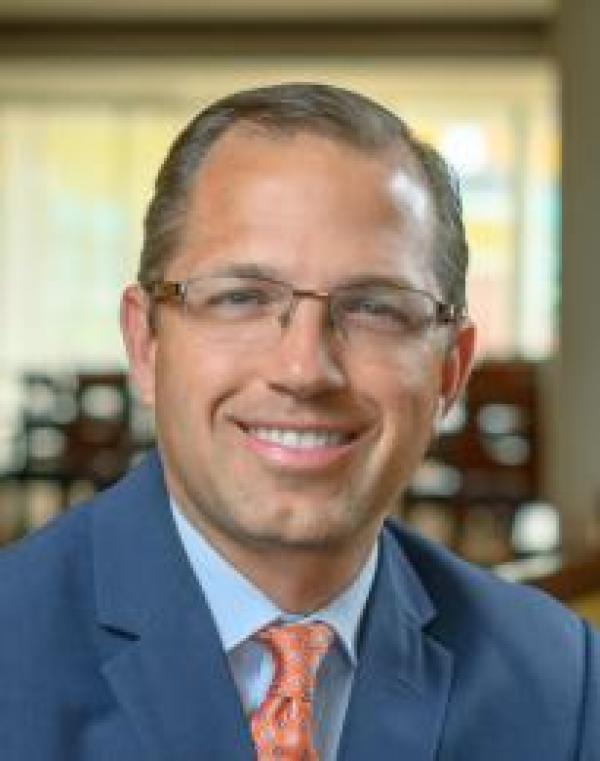By John L. Bowman, CFA, President of the CAIA Association.
In 1806, American Frederic Tudor famously sailed to the French Antilles to sell ice to the Martinique islanders. Having experienced refreshing cold drinks and ice cream during New England summers, he envisioned bringing Long Island Ice Teas and Cookies and Cream decadence to the much more sweltering Caribbean climate.
However, despite the seemingly sound business model it was a colossal failure. The Martinicans, having never experienced cold drinks or treats before, couldn’t grasp the benefit of ice. Their only frame of reference was warm beverages. Further, Tudor underestimated the system-switching costs of such a radical change. Questions arose about where and how the ice would be stored. How would the ice survive transit? Where would they source and manage other ingredients? The infrastructure and mindset of a transition of this magnitude quickly destroyed the enthusiasm of the young entrepreneur. Tudor missed the brilliance taught in the iconic parable; a fish doesn’t know they’re in water.
This system inertia is particularly strong in the investment industry. Since the introduction of Modern Portfolio Theory (MPT) in the early 1950s by the legendary Harry Markowitz, we have been sturdily anchored to this philosophy when constructing portfolios. MPT’s most tangible heir, strategic asset allocation (SAA), and all its apparatus—mean-variance optimisation, efficient frontier, benchmarking, not to mention organisational charts, compensation structures, academic course work, and performance reporting have perpetuated this worldview. Asset class taxonomy is the water we swim in.
There certainly have been advances in asset allocation models over the past 70 years. The endowment model was introduced by a Ford Foundation grant to Commonfund in 1971 and ushered into full maturity by David Swensen at Yale. With a strong emphasis on alternatives and illiquid assets to exploit their perpetual time horizon, this model significantly expanded our understanding of diversification benefits. The mainstream acceptance of the endowment model has played a major influence on alternatives representing 15% of the global investable universe, as is outlined in the next section. This model also typically employs a sophisticated investment committee and a reliance on long-standing, outsourced managers. The Canadian Model, birthed through the creation of the Ontario Teacher’s Pension Plan in 1990 and now embodied by the Maple 8, further optimised healthy governance and culture by fostering more autonomous asset management firms with insourced, competitively paid talent. But while these innovations resulted in important progress, their underlying DNA remained tethered to traditional asset class buckets.
In recent years, however, an enterprising handful of large institutional asset owners in New Zealand, Canada, Australia, and Singapore have begun challenging the common wisdom of an SAA approach given some of its inherent weaknesses. These include a tendency to breed silo behavior, unhealthy competition for resources and attention, unrecognised duplication or disjointed risk exposure across the portfolio, and difficulty in managing the capital pool holistically around a view of the future. Recognising these challenges, a new approach has emerged. While it takes on different lexicon and descriptions in certain environments, it is called Total Portfolio Approach (TPA). Geoffrey Rubin, Senior Managing Director and CPP Investments’ One Fund Strategist and contributing author aptly defines TPA this way, “One unified means of assessing risk and return of the whole portfolio.”
For over two decades, CAIA Association’s ethos has been to press the industry forward; to build awareness and transparency for formative strategies, modern capital allocation techniques, and evolving trends while remaining vigilant in protecting the interests of the investor. As such, we believe Total Portfolio Approach deserves the mobilising oxygen that CAIA’s global convening power can provide to a transformative topic.
After a worldwide listening tour and extensive research, we’ve assembled four industry leaders pioneering this next realm of portfolio construction to help us tell this story within a seminal report, Innovation Unleashed: The Rise of Total Portfolio Approach:
- Future Fund, Australia’s sovereign wealth fund
- CPP Investments, Canada’s largest pension fund
- New Zealand Superannuation Fund, NZ’s sovereign pension fund
- GIC, Singapore’s sovereign wealth fund
It’s critical to state that TPA is not a monolithic methodology that can be applied off the shelf. Rather, it has both hard and soft elements that create a spectrum of process variations. Charles Hyde, Head of Asset Allocation, NZ Super described it as more of a “state of mind” than a policy or process. Jayne Bok, Head of Investments, Asia of WTW reminds us that “TPA is not a specific model with a singular destination, but rather a range of approaches that can be tailored to the unique needs of different asset owners, regardless of their size or complexity.” Thus, there is no uniform checklist meant to represent an instruction booklet to assemble TPA at your organisation. Instead, we’ve asked each of these thought leaders to explore one of four dimensions of TPA: Governance, Factor Lens, Competition for Capital, and Culture. WTW, a forerunner in the TPA movement, provides a practical blueprint for those considering a transition to TPA and perhaps seeking a starting point for implementation.
Ben Samild, newly named Chief Investment Officer of Future Fund, begins where all change must commence: Governance. A healthy partnership with and structure amongst the board, Samild argues, is the means to embed what he calls the ‘Joined-up Portfolio Approach.’ Because boards exercising TPA more deeply empower the CIO office and larger investment staff by stewarding a “risk budget” or “reference portfolio” instead of a comprehensive asset allocation target. It liberates them to spend more time discussing the state of the world and competing opportunities without the constraint of labels or buckets.
Geoffrey Rubin and Derek Walker, of CPP Investments’ Total Portfolio team, address the weaknesses of asset class categorisation in understanding the drivers of risk and return of a diversified portfolio and endorse a Factor Lens as a more optimal approach in a TPA context. The foundation of a multi-factor lens begins with setting an appropriate market risk appetite before allocating that risk across exposures that they believe will yield the best risk adjusted return outcome through the course of market cycles. Of particular interest is how emerging or rapidly evolving factors like higher structural inflation, climate change, and geopolitical risk will be incorporated into TPA factor frameworks.
Hyde of NZ Super emphasises the principal identity and advantage of TPA: Competition for Capital. At its essence, TPA requires each unit of portfolio allocation to “earn its place” by committing to investing each marginal dollar in an optimal way. While all capital pools must abide by guardrails such as liquidity, risk budgets, and resourcing, the fundamental discipline aims to ensure that the very best investment ideas are reflected in the portfolio at any given time. That said, comfort in silos, challenges of data gathering for holistic comparison of opportunities, and rewards are often headwinds to fully realise these benefits.
The TPA journey for CAIA began in late 2022 with an insightful coffee meeting with Swee Chiang Chiam in the vibrant city of Singapore. So, it’s only fitting that GIC’s Head of Total Portfolio Policy and Allocation illuminate the bedrock dimension of Culture in employing TPA. A total portfolio culture requires the CIO to nurture a collaborative team and set of norms built on agility and long-termism; what they call “One GIC.” This ideal begins with behaviour modeling but also obliges a realignment of investment team structure, middle and back-office sophistication, organisational policies, and compensation frameworks to align all activity and incentives to the overall portfolio.
Jayne Bok, a CAIA Board Member, is given the last word, reflecting on years of experience as a strategic and policy advisor for clients of WTW who have pursued forms of TPA. Bok explains that TPA is a change management process at its core and while it is a superior form of governance and portfolio construction, it is not for the faint of heart, requiring bold and visionary leadership. This continuum of variations necessitate funds to avoid a myopic view of adoption and instead assess the practicality and unique nature of their plan before proceeding. Ultimately, starting with baby steps, and embracing continuous learning and adaptability, while remaining unified around the original ‘why’, is crucial.
We are confident this report is both timely and informative and will greatly benefit the reader, serving as an accelerant to the larger profession. Download your copy here.
About the Author:

John serves as President for the CAIA Association, overseeing the industry leading CAIA Charter, thought leadership and content development, operations, and CAIA's Asia Pacific strategy. John has devoted over 25 years to the asset management industry to recover the narrative of the value that the investment profession bring to society. He is a staunch public advocate for market integrity, long-termism, investor outcomes, diversity, human dignity and educational standards, as necessary ingredients to building a sustainable and healthy profession. John previously served as Managing Director for the Americas for CFA Institute, a region comprised of 40+ countries from Canada, the U.S., Central America, South America and the Caribbean. Bowman joined CFA Institute in 2004 after holding several industry positions. He served as a portfolio manager at Mellon Growth Advisors (MGA), where he was responsible for portfolio construction and stock selection for the MGA International Growth and MGA Global Growth strategies. Bowman also served as a portfolio manager for the International Growth Opportunities Strategy at State Street Global Advisors (SSgA) in its Global Fundamental Strategies Group. John is a prolific writer and commentator, frequently appearing in industry and business publications such as the Wall Street Journal, The New York Times, Pension and Investments, Financial Advisor, The Independent, Wealthmanagement.com and CNBC. Bowman earned a BS in Business Administration from Mary Washington College and is a CFA charterholder.




